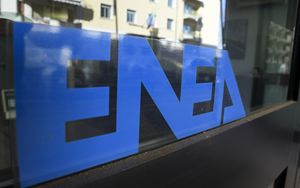(Finance) – A new one arrives software to calculate the emissions avoid CO2 equivalents from European programs. Is called CO2MPARE v.2.0 and he accomplished it AENEAS as part of the CO2MPARE Evolution project to support the activities of the various projects for sustainability, mitigation and adaptation to climate change. The new calculation model estimated a savings cumulative of over 170 million tonnes of CO2 equivalent for the ERDF (European Fund for Regional Development) and JTF (Just transition fund) projects, envisaged by the strategic guidance document for the programming of European funds (Partnership Agreement 2021-2027).
Version updated of the previous CO2MPARE, the model aims to respond to the challenges of programming 2021-2027 and was presented by ENEA in Rome on the occasion of an event attended by representatives of the European Commission, the Department for Cohesion Policies, the Presidency of the Council and of State Accounting. During the conference, the results of the application of the new version to the 2021-2027 Partnership Agreement (ERDF and JTF) were illustrated, which provides 45 million euros for the reduction of territorial gaps, and to PNRR.
The application to the PNRR allowed us to estimate a reduction of approximately 560 million tons of CO2 equivalents over the total life span of the interventions, i.e. from their start to their conclusion. The CO2MPARE model v. 2.0 allows you to make ex ante, ongoing and ex post evaluations plans And programs: it is possible to estimate in advance the effects of alternative scenarios linked to the planning of the planned interventions and then verify the alignment of the activities with the initial objectives and, finally, analyze the results achieved.
As he explains Cecilia Camporeale, researcher of the ENEA Department Sustainability, circularity and adaptation to climate change of production and territorial systems, the advantages are many: “The model provides the cumulative equivalent CO2 emissions of a plan or program starting from the total financial allocation divided, based on the choices of national or regional administrations, by sector of intervention. It allows you to distinguish between direct emissions and indirect emissions, both in the construction phase and in the operational phase. Thanks to its flexibility, it can be applied to plans and programs by reconstructing an ad hoc architecture, using the library of standardized project-types available to the model and which, as part of the CO2MPARE Evolution project, has been updated. Furthermore, it allows you to compare alternative scenarios for the same program. It is, therefore, a significant tool for orienting investment choices, especially those for the cohesion of the European Union, towards sustainable growth and a low-carbon economy”.
